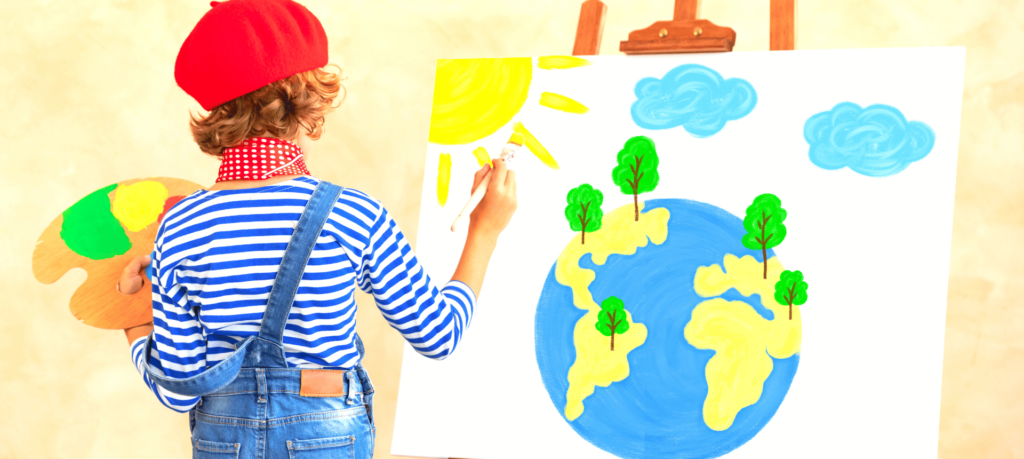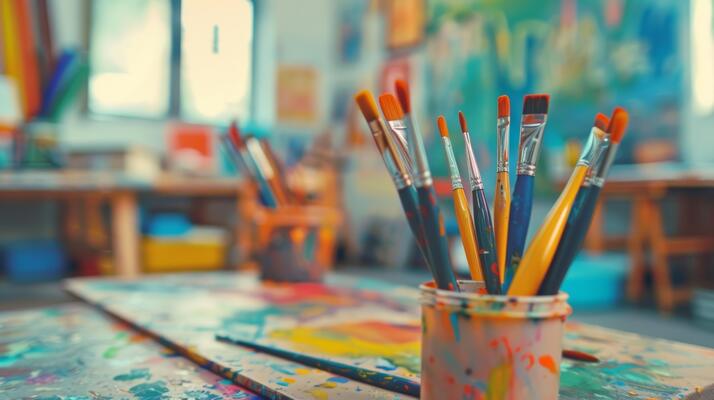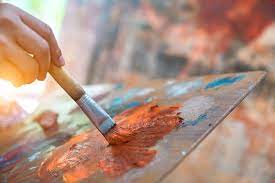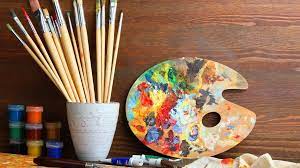Introduction
Visual arts have been a cornerstone of human culture and expression for thousands of years. From the earliest cave paintings to modern digital installations, visual art forms like painting, sculpture, and photography capture our emotions, ideas, and experiences in unique and powerful ways. These art forms not only provide aesthetic pleasure but also reflect societal values, challenge perspectives, and communicate across languages and cultures.
This article delves deeply into the world of visual arts, exploring its major forms, historical development, techniques, and the significance it holds in contemporary society. Whether you are an aspiring artist, an art enthusiast, or simply curious about the creative process, this comprehensive guide will give you a rich understanding of visual arts and their enduring impact.
What Are Visual Arts?
Visual arts are art forms that are primarily visual in nature — meaning they are meant to be seen. This broad category includes painting, sculpture, photography, drawing, printmaking, ceramics, and even newer forms like digital art and installations.
Visual arts differ from performing arts (like music or theatre) because they result in physical or visual objects, which can be experienced over time or all at once. They engage the viewer through shape, color, texture, space, and composition.
Painting: The Art of Color and Expression
Historical Overview
Painting is one of the oldest and most widely practiced visual art forms. From prehistoric cave paintings discovered in Lascaux, France, to the Renaissance masterpieces of Leonardo da Vinci and Michelangelo, painting has evolved continuously.
Throughout history, painting styles and techniques have reflected cultural, religious, and social contexts. The Renaissance period emphasized realism and perspective, while Impressionism focused on light and color perception. In the 20th century, abstract and expressionist movements expanded the boundaries of painting, exploring emotion and conceptual ideas.
Techniques and Mediums
Painting employs various techniques and mediums, including:
- Oil painting: Known for its richness and blending capabilities, oil paint became popular during the Renaissance.
- Watercolor: Transparent and fluid, ideal for softer effects.
- Acrylic: A modern medium that dries quickly and is versatile.
- Fresco: Pigments applied on wet plaster, often seen in murals.
- Tempera: An ancient method using pigments mixed with egg yolk.
Artists choose mediums based on the desired texture, color intensity, and durability.
Contemporary Painting
Modern painters often experiment with mixed media, digital tools, and unconventional surfaces. Themes range from political commentary to personal identity, reflecting today’s complex world. Painting remains a powerful form of storytelling and emotional expression.

Sculpture: Bringing Forms to Life in Three Dimensions
Evolution of Sculpture
Sculpture, the art of creating three-dimensional forms, dates back to ancient civilizations. Early sculptures often depicted gods, animals, or human figures, serving religious or symbolic purposes.
Famous sculptures like Michelangelo’s David or the Venus de Milo showcase mastery of anatomy and form. Different cultures developed unique styles — from the delicate terracotta figures of Asia to the monumental stone statues of Egypt.
Materials and Methods
Sculptors work with a wide range of materials:
- Stone (marble, granite): Carved to reveal the form within.
- Metal (bronze, steel): Often cast or welded.
- Wood: Carved or assembled.
- Clay: Molded and then fired.
- Modern materials: Plastics, glass, found objects.
Techniques include carving (subtracting material), modeling (adding or shaping pliable material), casting (pouring materials into molds), and assembling (combining parts).
Contemporary Sculpture and Installation Art
Today, sculpture often transcends traditional forms. Installation art combines sculpture with environment, light, sound, and interactivity, creating immersive experiences. Contemporary sculptors explore themes like identity, environment, and technology, pushing boundaries beyond static objects.
Photography: Capturing Moments and Narratives
Origins and Development
Photography, the art and science of capturing light to create images, was invented in the 19th century. It revolutionized visual arts by allowing the instant capture of reality, previously only possible through painting or drawing.
Early photography was technical and experimental. Over time, it evolved into an expressive medium with genres such as portrait, documentary, landscape, and abstract photography.
Techniques and Styles
Photographers use various techniques, including:
- Composition: Rule of thirds, framing, leading lines.
- Lighting: Natural vs. artificial, chiaroscuro.
- Exposure: Manipulating shutter speed, aperture, and ISO.
- Editing: Darkroom techniques historically; digital editing now common.
Styles range from black-and-white fine art photography to vibrant street photography, each with its own narrative power.
Digital Photography and Its Impact
The digital revolution democratized photography, making it accessible to millions. Digital tools enable artists to manipulate images, combine multiple shots, and experiment creatively.
Social media platforms like Instagram have transformed photography into a global language, influencing trends, culture, and communication.

The Importance of Visual Arts in Society
Cultural Expression and Identity
Visual arts serve as a mirror reflecting the values, beliefs, and struggles of societies. They preserve history, celebrate traditions, and give voice to marginalized communities.
For example, indigenous art communicates deep connections to land and spirituality. Contemporary art often challenges social norms and raises awareness on issues such as climate change, inequality, and human rights.
Emotional and Psychological Impact
Viewing or creating visual art can evoke powerful emotions and provoke thought. Art therapy uses this principle to aid mental health by enabling expression and healing through creativity.
Visual arts stimulate imagination, encourage empathy, and provide comfort and inspiration.
Economic and Educational Value
Art contributes significantly to economies through galleries, museums, art fairs, and tourism. It also plays a vital role in education, fostering critical thinking, creativity, and cultural literacy.
Learning and Practicing Visual Arts
Developing Skills
Whether self-taught or formally trained, learning visual arts involves mastering techniques, experimenting with materials, and developing a personal style. Practice, observation, and study of art history enrich the creative process.
Workshops, online tutorials, and art schools provide structured learning, while artist communities offer feedback and support.
Tools and Resources
Today’s artists have access to a vast array of tools — traditional brushes and chisels to digital tablets and software like Photoshop or Procreate. Combining traditional and modern tools expands creative possibilities.
The Role of Galleries and Exhibitions
Exhibitions provide artists with platforms to showcase their work and engage with audiences. Galleries, museums, and art fairs facilitate sales, critique, and networking, nurturing the art ecosystem.
Challenges and Future Directions in Visual Arts
Challenges
Artists face challenges such as funding, market competition, and maintaining originality in an oversaturated digital space. Preservation of artworks, especially contemporary digital and mixed-media art, presents technical and ethical questions.
The Future of Visual Arts
New technologies like augmented reality (AR), virtual reality (VR), and artificial intelligence (AI) are reshaping how art is created and experienced. Interactive and immersive art forms invite audiences to participate actively, blurring the lines between artist and viewer.
Sustainability and inclusivity are becoming central themes, encouraging artists to explore environmentally friendly materials and diverse cultural narratives.

Conclusion
Visual arts—painting, sculpture, photography, and beyond—remain vital expressions of human creativity and culture. They connect us to our past, enrich our present, and inspire the future. Whether you are an artist or admirer, understanding the depth and diversity of visual arts enhances appreciation and fosters a deeper connection to the world.
By exploring different mediums, techniques, and historical contexts, anyone can engage with visual arts in meaningful ways. The evolving landscape of visual arts invites all of us to participate in its ongoing story—through creation, education, or simply observing the beauty and meaning it brings into our lives.







